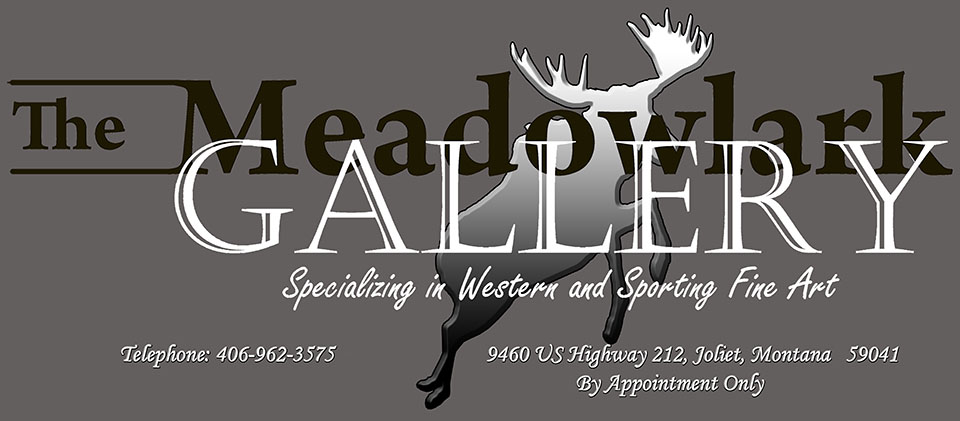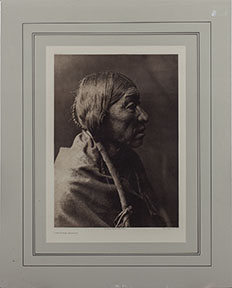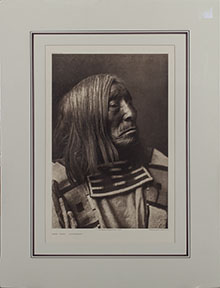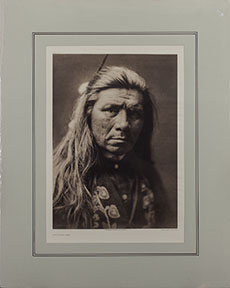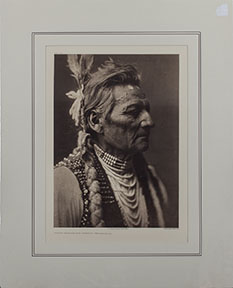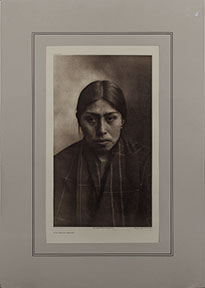|
|
||
|
Edward
S. Curtis |
||
| Edward Sheriff Curtis was fascinated with photography. In his teens, he made his first camera in his family's rural Wisconsin home, following instructions in a borrowed manual and using a stereoptican lens his father had brought home from the Civil War. Before he was twenty, he had moved to St. Paul, Minnesota, where he worked as a photographic assistant, learning the fundamentals of photography and gaining experience in printing and coating. In 1887, Curtis moved to Washington Territory with his family, where he first encountered Native Americans whose culture and traditions were relatively untouched by the white man. Moved by this experience and driven by the belief that the proud Indian race was vanishing, Curtis began making a visual and written record of information on the Indians of North America in 1896. Curtis encountered every imaginable type of hardship as he systematically recorded the significant aspects of the life and culture of more than eighty Indian tribes west of the Mississippi. He made more than forty thousand negatives, many on glass plates, first using a fourteen inch by seventeen inch view camera and finally a six inch by eight inch reflex camera. By 1905, Curtis decided to devote himself entirely to recording every possible detail of American Indian life. For years, he financed himself, laboring with pitifully small sums of money and with little prospect that his work would ever reach an audience. His work was then brought to the attention of President Theodore Roosevelt, who grasped the importance of it. With a letter of introduction from President Roosevelt, Curtis was able to obtain the patronage of J. P. Morgan in 1906, making the project possible. Completed in 1930, the twenty volume North American Indian was a masterpiece without precedent, one of the finest, costliest, and most exceptional examples of bookmaking and binding. Printed on imported, handmade paper, each volume contains several hundred pages of text and seventy five, 5.5 inch by 7.5 inch photogravure impressions. Each of the twenty volumes is accompanied by a portfolio containing thirty six, 11.5 inch by 15 inch sepia photogravure impressions on fine India proof paper. The text, produced under the editorship of Frederick Webb Hodge of the Smithsonian Institute, was a storehouse of anthropological description, covering games, origin myths, sacred rites, musical forms, and glossaries. The first and only edition was to be limited to five hundred sets of folios and text. Yet so formidable were the problems of publication that only two hundred seventy sets were ever produced. Each set originally sold for about $3,500.00. After the project was completed in 1930, Curtis and his work slipped into obscurity. The luxuriously expensive creation has been, until recently, largely hidden from public view in private collections and rare book libraries. While Curtis died relatively unknown, a revival of interest in him and his work is taking place. One recent review of his work concluded, "Curtis' lifework stands today as a central source for visual and written information on the North American Indian tribes, as an absolute and unmatched masterpiece of visual anthropology, and one of the most thorough, extensive, and profound photographic works of all time." | ||
|
View high resolution images of works by Edward
S. Curtis when available. |
||
Have questions about these images? E-mail Meadowlark Gallery!!Home Page / Biography Library / Bronze / Collectibles / Etchings / Paintings / Pen and Ink / Graphite / Working Decoys Gallery Credentials / Firearms / Triangle Z Ranch Furniture / Customer Percs |
||
